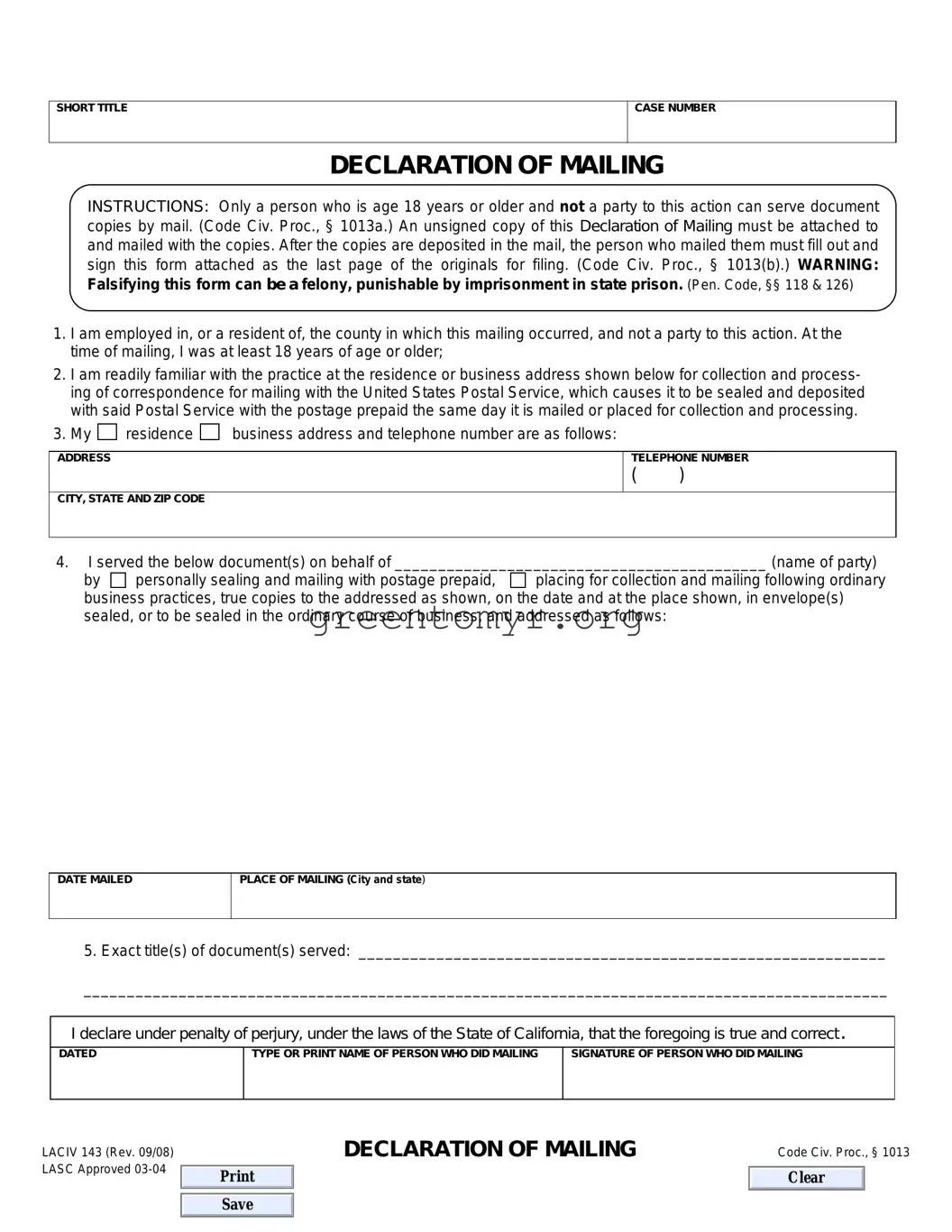Completing the Declaration of Mailing form can be a straightforward process, yet many individuals encounter common pitfalls. These mistakes can lead to delays or complications in legal proceedings. Understanding these errors is vital for ensuring accuracy and compliance with the requirements.
One frequent error is failing to ensure that the individual completing the form is at least 18 years old and not a party to the action. It is essential that the person submitting the form meets these criteria. If this requirement is overlooked, the mailing could be deemed invalid.
Another common mistake is neglecting to attach an unsigned copy of the Declaration of Mailing to the mailed packets. The instructions clearly state that this copy must accompany the documents when sent out. Forgetting this step can cause unnecessary hurdles in the case.
Providing incorrect or incomplete information about the mailing address is another misstep. Ensuring the address of the recipient is written clearly and accurately is fundamental. Errors in spelling or format can lead to misdelivery, thereby affecting the overall process.
Many individuals do not familiarize themselves with standard mailing practices. The form requires the individual to be acquainted with the procedures for sealing and processing correspondence for mailing. Inadequate understanding may result in improperly handled documents.
Failure to include the complete title(s) of the documents being served can also complicate matters. This information must be filled out precisely as it appears in legal documents. Leaving this section incomplete or vague may lead to confusion regarding what was sent.
In some instances, dates are entered incorrectly or omitted altogether. The date on which the documents were mailed is a critical piece of information. Inaccuracies here can question the timelines established in legal proceedings.
Some individuals overlook the necessity of providing both the place of mailing and the name of the party on whose behalf the mailing is done. Without this information, the purpose of the mailing and its origin may be unclear, undermining the effectiveness of the declaration.
Omissions in personal contact information, such as the telephone number, can also pose problems. The incomplete information can hinder follow-up communications or queries related to the mailing.
Lastly, individuals may forget to sign and date the form. Not providing a signature makes the declaration void, as it cannot be considered a legitimate affidavit without authentication. This omission essentially nullifies the entire process.
Overall, careful attention to detail and adherence to the instructions can help avoid these common mistakes. Taking the time to review the form thoroughly can ensure that all necessary components are accurately completed, thus facilitating a smoother process in legal matters.

